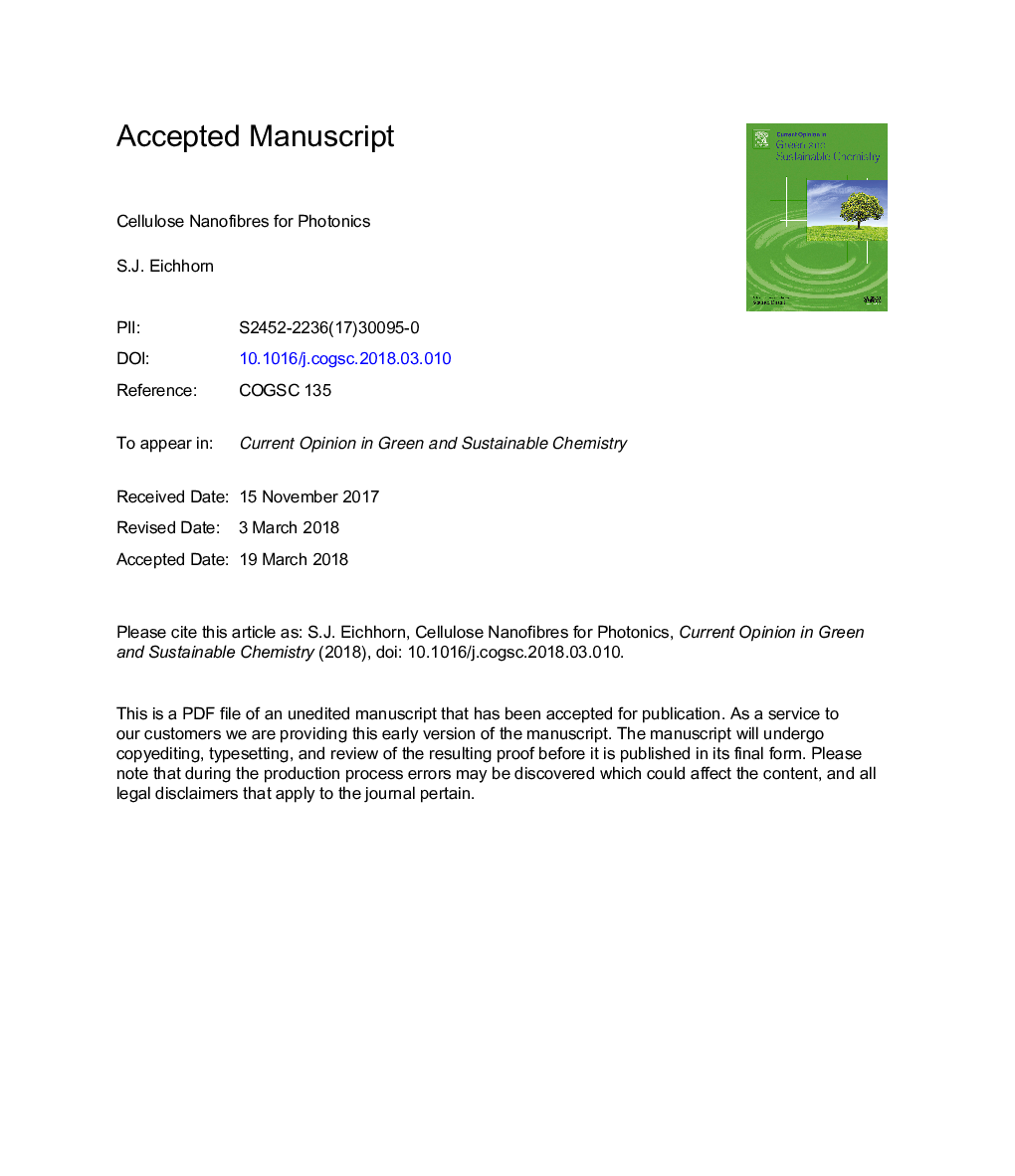| Article ID | Journal | Published Year | Pages | File Type |
|---|---|---|---|---|
| 7695253 | Current Opinion in Green and Sustainable Chemistry | 2018 | 20 Pages |
Abstract
Cellulose nanofibres often have lateral dimensions less than the wavelength of visible light which makes them potentially useful in photonic applications. In addition to this they offer a surface onto which metal nanoparticles and other materials can be added, such as dyes and quantum dots, enabling functional photonic and plasmonic devices to be fabricated. Optical enhancement, via pump-probe lasing or resonant coupling of photonic-plasmonic modes then becomes possible with these devices. Most importantly the underlying cellulosic materials used to make these devices are potentially cheap and sustainable, allowing the possibility for large scale and affordable production. This review aims to cover this emerging area of research, identifying the challenges that are facing the community, and possible ways forward to further develop the materials towards functional and sustainable photonics.
Related Topics
Physical Sciences and Engineering
Chemical Engineering
Catalysis
Authors
S.J. Eichhorn,
